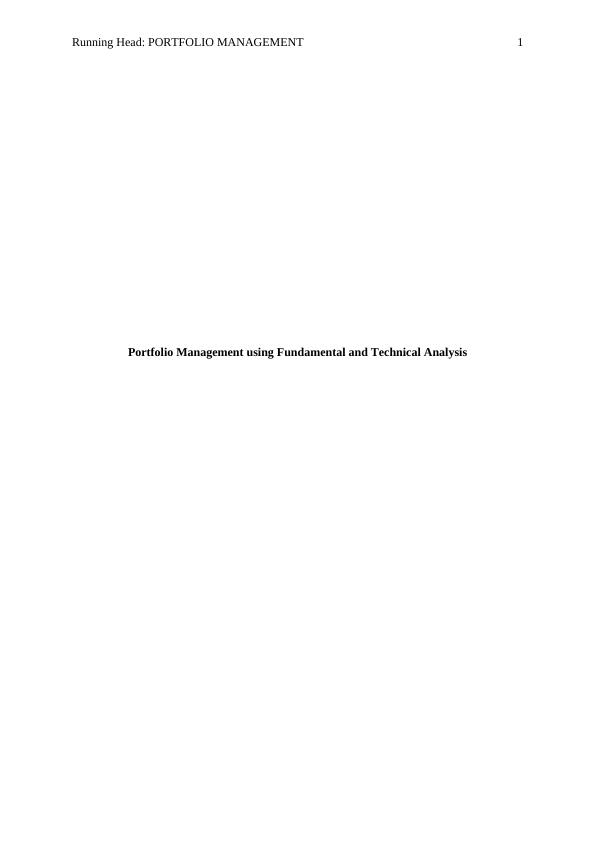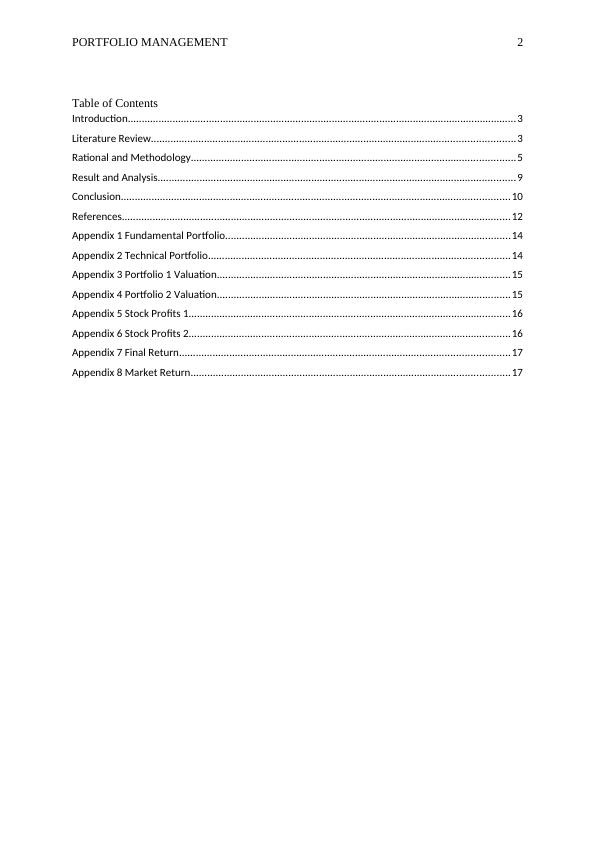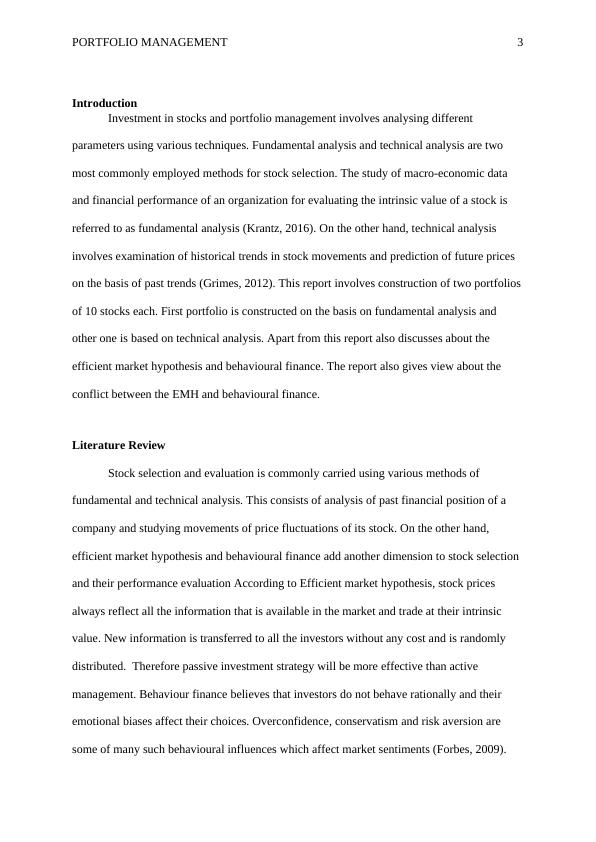Portfolio Management using Fundamental and Technical Analysis
The assignment is about the application of technical analysis in advanced financial management, specifically focusing on the behavior of stock prices and the search for recurring patterns. The disclaimer states that the techniques taught are for learning purposes only and not for personal trading in securities.
18 Pages3787 Words97 Views
Added on 2023-06-15
About This Document
This report discusses portfolio management using fundamental and technical analysis. It involves construction of two portfolios of 10 stocks each and evaluates their performance. The report also covers the efficient market hypothesis and behavioural finance. It provides insights into stock selection and evaluation using various methods of analysis. The report concludes that markets can be beaten using various techniques of portfolio management.
Portfolio Management using Fundamental and Technical Analysis
The assignment is about the application of technical analysis in advanced financial management, specifically focusing on the behavior of stock prices and the search for recurring patterns. The disclaimer states that the techniques taught are for learning purposes only and not for personal trading in securities.
Added on 2023-06-15
ShareRelated Documents
End of preview
Want to access all the pages? Upload your documents or become a member.
Advanced Financial Management
|18
|3613
|317
FIN602 - Advanced Financial Management - PDF
|34
|7743
|90
Dividend Discount Model for CBA Stock Valuation
|5
|777
|148
Fundamental and Technical Analysis of 20 Singapore Companies
|23
|6785
|272
Evaluation of Fundamental and Technical Analysis Portfolio
|35
|2957
|110
Chapter 11 Efficient Market Hypothesis
|8
|3249
|35




